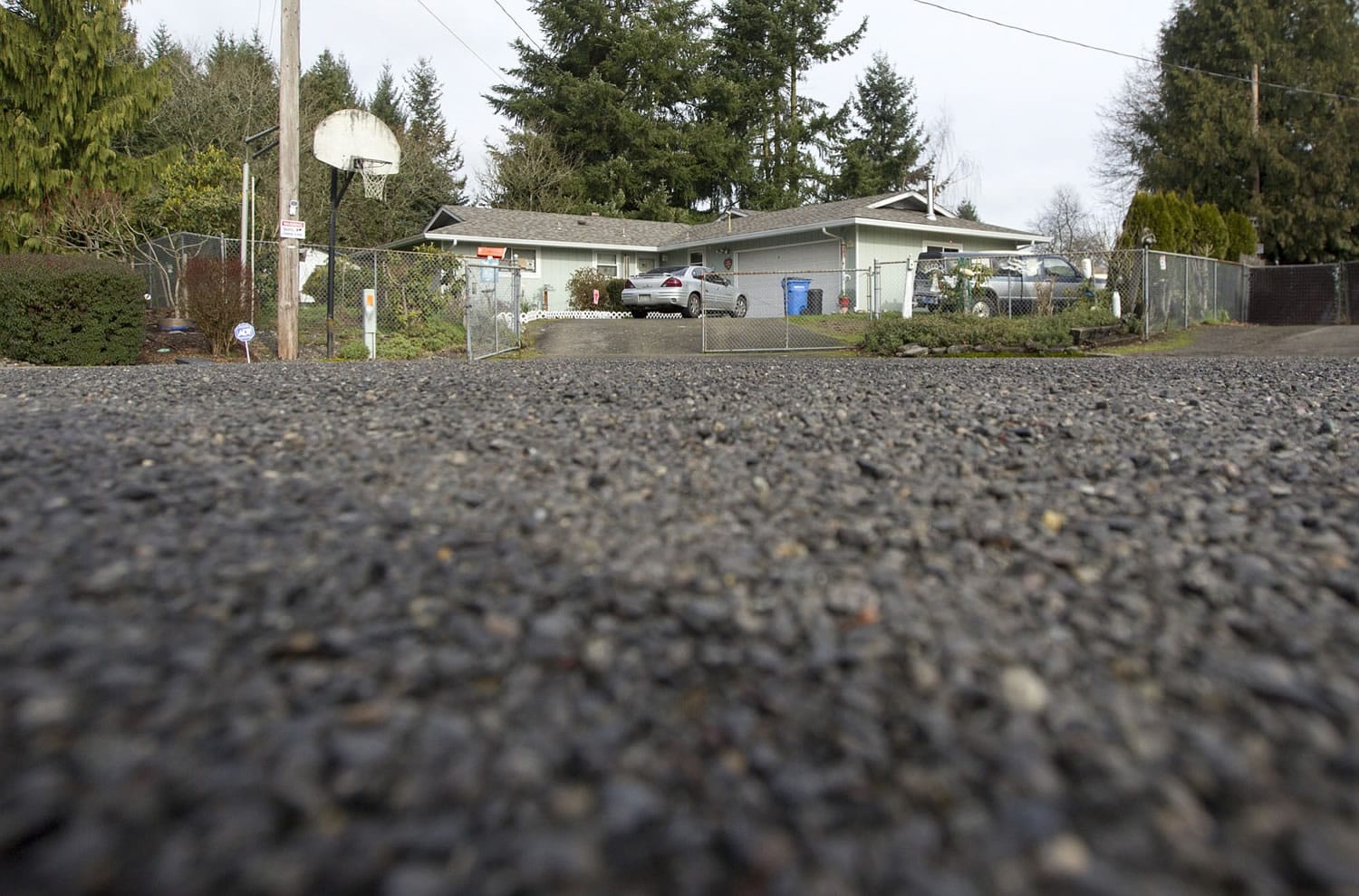Clark County Public Works is sweeping unfinished roads more frequently to help manage the loose gravel. The public works operation center can be reached at 360-397-2446.
Lanay Myers was happy to see that the road she lives on was getting a face-lift last summer. But her mood turned to irritation when the project was halted a few weeks later, with the road treatment left unfinished.
“It was in need of repairs,” she said. “This just made it worse.”
Crews began work in front of Myers’ home — on a segment of Northeast 89th Avenue the ends in a cul-de-sac — and on other nearby neighborhood streets in early August. Myers received a letter alerting her that she wouldn’t be able to access her home on Aug. 23 because crews were to apply the protective seal on the road.
Myers and her husband, Mike Myers, left for a few days, only to return and find their street unfinished. When they called Clark County for an explanation, they were told the contractor didn’t have time to finish the job, Lanay Myers said.
Since then, the street has been a headache for the Myers family and their neighbors.
John Bister, who lives next door, got a flat tire on his race car, which he loads onto his trailer in the street. When trying to turn his trailer in the cul-de-sac, two tires on his trailer popped, Bister said.
Bister said he can’t prove the tires were popped by the rocks in the street, but in the eight years he’s lived in his home, he’s never had a problem before.
“My friend won’t even bring his car over because of all the rock chips,” Bister said.
The loose rocks have chipped the bottom of his friend’s show car, Bister said. The asphalt-covered rocks also stick to vehicles and the bottoms of shoes, Lanay Myers said.
Myers said she’s talked to residents living on other unfinished roads in the Sunnyside neighborhood, and they have similar complaints, particularly when it comes to the loose gravel.
“No matter how slow you drive, you’re kicking up rocks,” she said.
Clark County acknowledges the halted project left roads unfinished and is aware of the problems with loose gravel.
“We understand there is a problem here, and we’re working to rectify it,” said Jeff Mize, spokesman for Clark County Public Works.
Two-step process
The work in the neighborhood was part of the county’s summer road preservation program, Mize said.
The Myers’ street was one of 55 street segments in Clark County scheduled to receive a rubberized asphalt cape seal, which is applied in two stages.
First, an asphalt rubber binder — a mixture of asphalt, oil and rubber — is applied to the road, followed by a layer of crushed rock that has been pre-coated with the mixture. The road is then pressed with rollers to bind the rocks to the mixture.
The second stage, which typically occurs one to two weeks later, is to top the rocks with a slurry seal. Doing so requires closing the road to all traffic for up to four hours to give the slurry time to cure.
The Myers’ road received the first phase of the treatment but not the slurry seal, Mize said. Out of the 55 road segments scheduled to receive the two-part treatment, 29 did not receive the slurry seal, he said.
The contractor, California-based Intermountain Slurry Seal, was still working on the roads when school started in September. Because the slurry seal requires closures, and many of the streets have bus traffic and no sidewalks, the county halted the project, Mize said.
“We basically put the program on hold not to interfere with school,” Mize said. “We thought it was going to cause too many problems.”
The first stage of the treatment is a commonly used stand-alone treatment; it should have held up to traffic without rocks breaking loose, he said.
“We’re still assessing why the rock is breaking from the road surface,” Mize said.
The contractor, which has already been paid for the first stage of the treatment, will be responsible for repairing the treatment and replacing the rocks, Mize said. The contractor has not been paid for applying the slurry seal, he said.
“The unfinished roadways will be the first order of business this summer,” Mize said.
Road work will resume the first Monday following the last day of school this June, he said.
But the Myerses and Bister don’t want to wait until summer, particularly because their segment of the road isn’t used by school buses.
“It’s kind of frustrating,” Bister said. “Why can’t they make the contractor come in and fix that? … I’d like to get it finished.”




